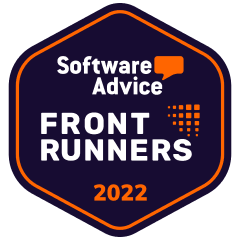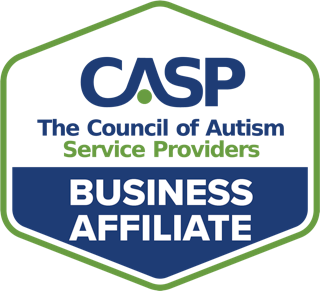As therapists, we are well aware that change can be difficult for our clients and for us. Once we get accustomed to doing something one way, we typically prefer to keep things the same. However, we also know that adapting activities to make them easier and more efficient is a key to what we do for both our clients and ourselves.
We understand that therapy practices or therapists within these practices may have a strong relationship with documenting manually, either using pencil and paper or using Word or Google Docs. As an industry, we are now at a point where those methods are antiquated and can impact your practice negatively. By pivoting to an Electronic Medical Record (EMR) and using other online tools, you can quickly take your practice to another level in critical areas, such as billing and scheduling.
We’re now going to provide five reasons for moving away from manual documentation. We expect you’ll be tossing away your pencils & paper after reading this regardless of how you feel about change.
1. Meet HIPAA Requirements
A solid EMR allows you to protect client information and only provides access to specific providers in your practice. A robust EMR typically contains these features:
- “Access control” tools like passwords and PIN numbers, so practice owners can limit access to authorized individuals
- An “audit trail” feature which records who accessed documents, what changes they may have made, and when those changes occurred
- Methods for sharing documents with other providers working with your client
By completing your documentation within the safety of an EMR, you avoid situations where many employees have access to a file cabinet where your client records are stored. It also prevents the situation where an employee is completing documentation on a personal laptop that other people in their family may use as well. These situations put your company at risk for a HIPAA violation.
Completing all documentation within an EMR will help avoid the costly impact of a HIPAA violation.
2. Standardize and Improve Documentation While Saving Time
By setting up systems within a robust EMR, you can ensure that documentation follows a standardized format that meets requirements set by your funding entities. No more encountering a situation where payment is denied for services because of inadequate documentation. Your notes can be set up with required fields, and formatting can ensure that progress towards objectives is clearly documented.
In a solid EMR, demographic information will pull to your therapy reports and notes, avoiding situations where a nickname might be used and result in denials. When notes are completed, much of the information will auto-populate, saving your therapists valuable time.
Robust EMR systems often allow therapists to pull up previous therapy notes, and then modify them based on the client’s performance on that date. Assessment templates reduce the time spent by your providers in completing their report. Again, these features reduce the time that your therapists spend completing their documentation, thus allowing more time with their clients.
Reducing documentation time, while improving quality, helps your practice in several ways:
- Improved employee retention due to job satisfaction
- Improved client outcomes because of more time spent directly with clients and families
- Increased revenue with therapists spending less time on non-billable activities
Reduce the time that your therapists spend completing their documentation, thus allowing more time with their clients.
Dr. Judy Sloop Share this
3. Improve Quality and Coordination of Care
Documentation within an EMR also allows access by authorized users to improve coordination of care. Your speech and language pathologist can log into the EMR, and quickly review the occupational therapist and BCBA’s notes prior to providing their session. Reports and notes can also be shared with providers who work remotely and rarely come into the center.
If a therapist needs to refresh their memory from a previous session, they can quickly pull that previous note up in the EMR and review. This HIPAA compliant access for authorized team members improves quality of care for your clients.
Another reason for completing documentation within an EMR is that parents can access your notes easily and securely. Many funding entities require documentation showing parent involvement and training, which can be partially accomplished through sharing your documentation. Making documents available to families helps avoid situations related to “information blocking”, another HIPAA requirement.
4. Ensure Documentation is Complete and Timely
When using a robust EMR, you can set up methods to require that documentation is completed and track any sessions where that documentation might be missing. An internal audit process can be developed and completed quickly on a regular basis to track any missing or late documents that could interfere with patient care and billing. The EMR will eliminate situations where you are asked for therapy notes for a specific time period, and you realize notes are missing for specific dates.
Additionally, most EMRs will track when a note was completed, which some insurance companies require. This information helps you manage your team and the expectations set by your practice. You can then run regular internal audits to identify any notes that are not being completed in a timely manner, according to the expectations set by your practice. Timely documentation is critical to quality client care, and accurate reporting of that care.
5. Ensure That Your Company is Audit-Ready
With more insurance companies and other funding sources performing audits of service providers, it is critical that you have an easy way to provide the information that these auditors request. One essential component of these audits is documentation showing progress, along with full documentation to support all billed services.
By documenting within a solid EMR system, those records are all at your fingertips quickly. And as discussed earlier, you have standardized your documentation to meet insurance requirements, making the audit process a successful one for your practice. If timely documentation is a requirement of that funding source, you have that information ready to share with the auditor at a moment’s notice. If parent signatures are required, you can easily show that as well.
A robust EMR with good internal auditing processes will make audits less painful and more successful. At Rethink, we have multiple solutions that can help you migrate from paper to a digital format. Our newest product, Rethink TotalTherapy can help with the transition, especially if you are expanding to other types of therapies.









